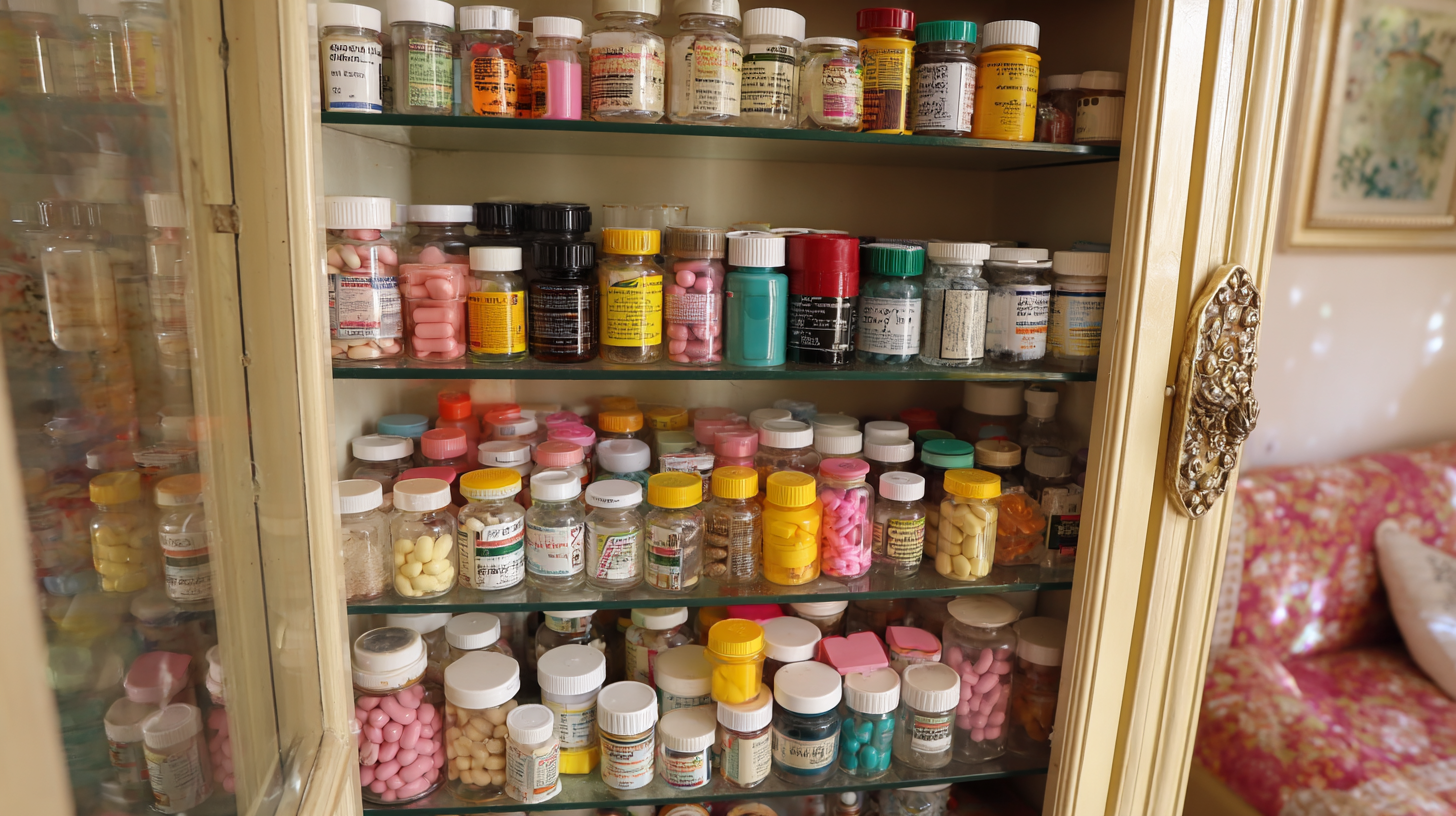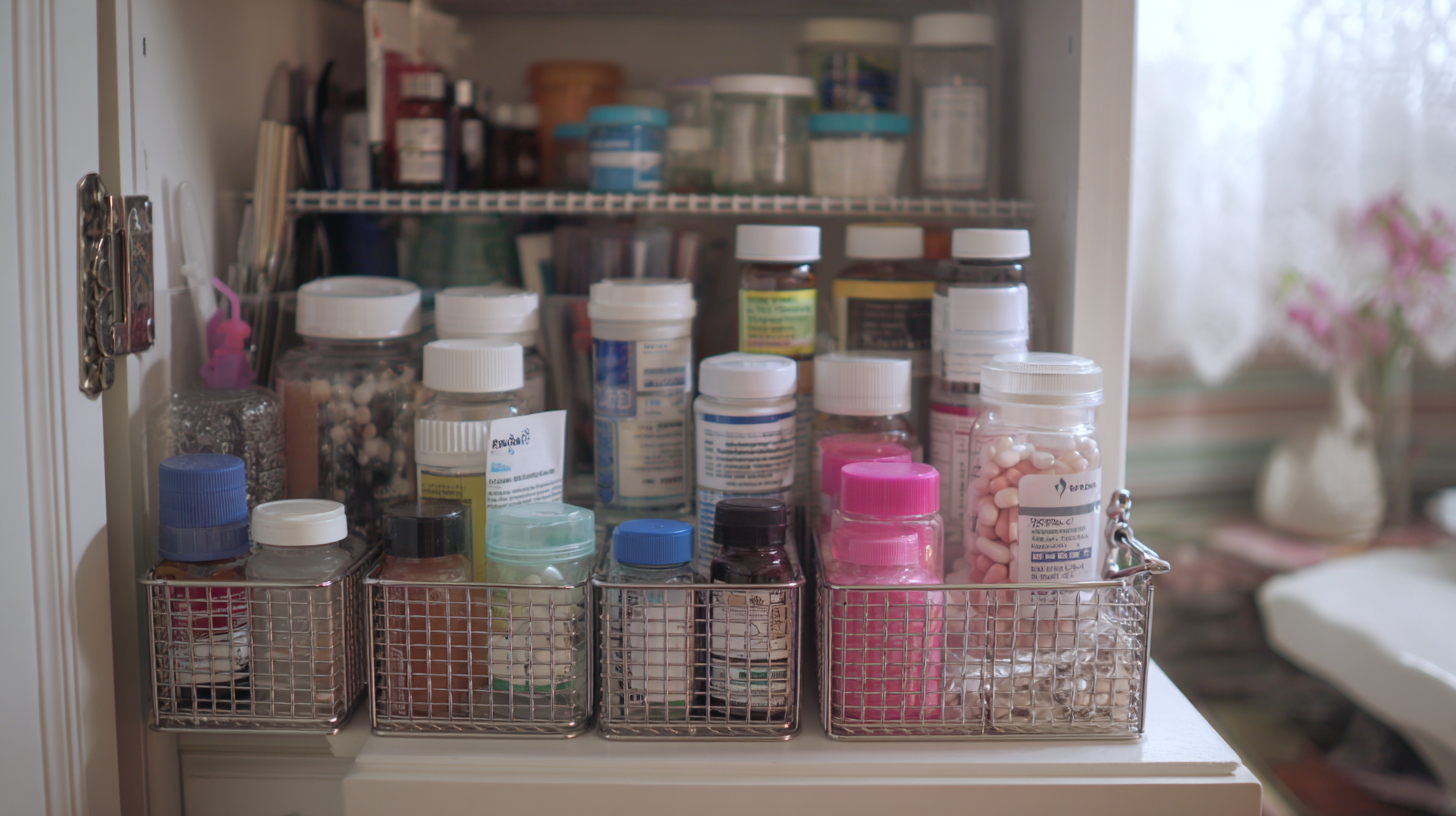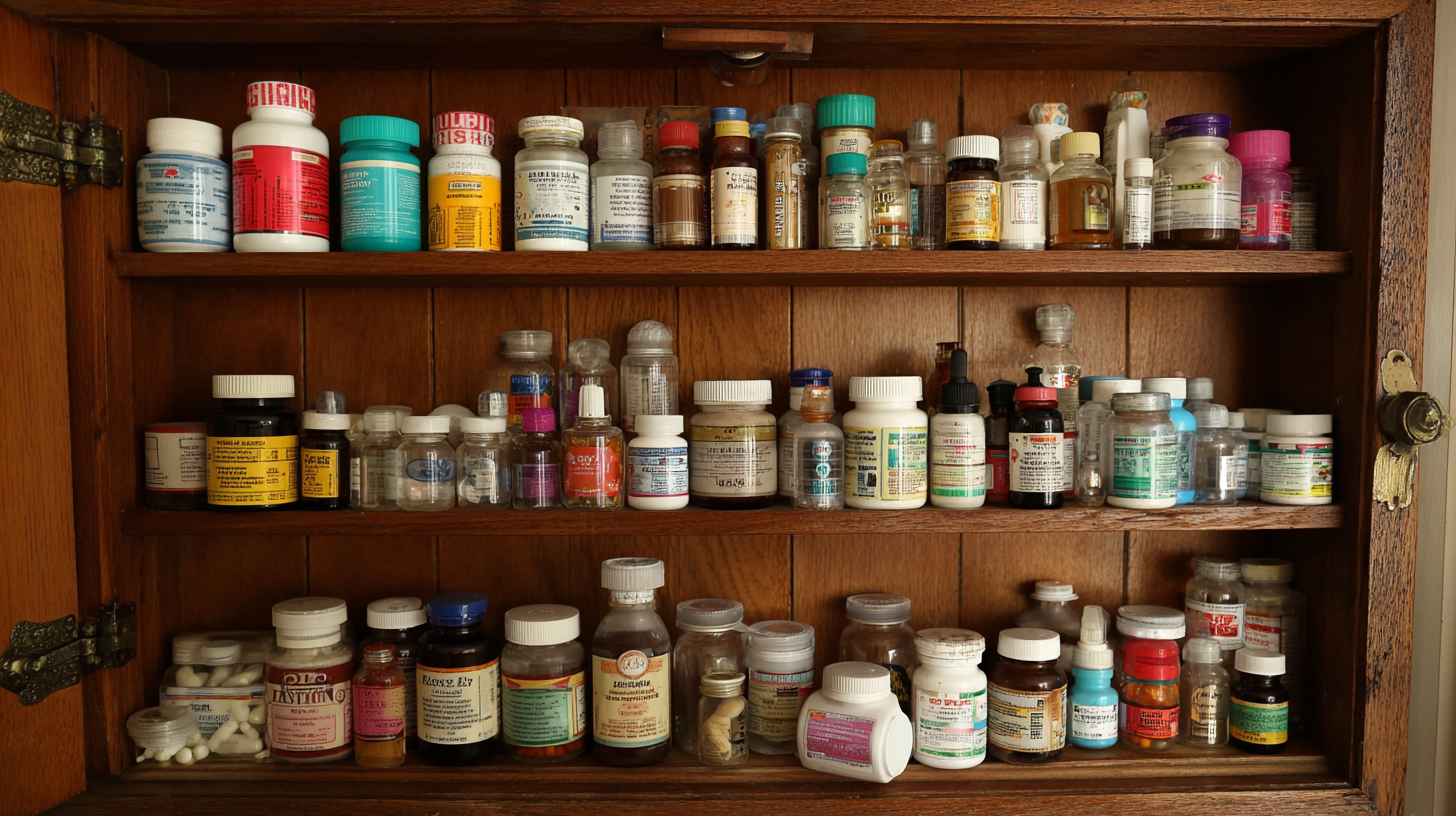Blog
How to Effectively Organize Your Home Medicine Cabinet for Quick Access
In today's fast-paced world, having an efficiently organized home medicine cabinet is crucial for quick access to medications and supplies when needed. According to a report by the American Association of Poison Control Centers, over 60,000 children are treated annually for unintentional medicine poisoning, underscoring the importance of proper medicine storage. Additionally, a survey conducted by the National Home Management Institute revealed that nearly 75% of households do not store their medications effectively, leading to confusion and potential misuse.

As individuals increasingly prioritize health management, the concept of “Medicine At Home” has gained traction, highlighting the need for structured organization within personal spaces. By implementing effective organization strategies, homeowners can reduce risks, ensure prompt access to essential health items, and foster a safer environment for their families.
Essential Items to Include in Your Home Medicine Cabinet
When organizing your home medicine cabinet, it’s essential to include a range of items that cater to both basic health needs and potential emergencies. Start with over-the-counter medications such as pain relievers, cold and flu treatments, allergy medication, and antacids. It’s also prudent to have a digital thermometer, band-aids, and antiseptic wipes on hand. These essentials not only address common ailments but also ensure you are prepared for minor accidents.
In addition to medications, consider including first aid supplies like gauze, adhesive tape, and a pair of disposable gloves. This prepares you for situations where you might need to administer immediate care. Make sure to check expiration dates regularly and discard any expired items, as outdated medications can be ineffective or even harmful. Keep everything organized in labeled containers for quick access; this will save you time and minimize stress during those crucial moments when every second counts. By thoughtfully curating your medicine cabinet, you ensure that you and your family are well-prepared for health-related needs while keeping the space neat and functional.
Tips for Categorizing and Labeling Your Medicine Supplies
When it comes to organizing your home medicine cabinet, categorizing and labeling your supplies is key for quick access in emergencies. Start by grouping your medications and medical supplies into specific categories, such as pain relievers, cold and flu treatments, first-aid essentials, and prescriptions. This not only makes it easier to find what you need but also helps ensure that items are used before they expire. Use clear containers or bins to separate each category, reducing clutter and enhancing visibility.
Labeling is equally important in maintaining an organized medicine cabinet. Invest in a label maker or use simple masking tape and a permanent marker to clearly identify each container or shelf. Consider including expiration dates on the labels for medications, so you can keep track of what's still good and what needs to be discarded. Additionally, create a checklist of all items in your cabinet, which can help you keep track of essential supplies and remind you when it’s time to replenish your stock. With these categorizing and labeling strategies, you'll have a well-organized medicine cabinet that promotes preparedness and peace of mind.

Best Practices for Storing Medications and First Aid Items
When it comes to organizing your home medicine cabinet, following best practices for storing medications and first aid items is essential for quick access during emergencies. Start by categorizing your items—group similar products together to make it easier to find what you need. For example, keep all prescription medications on one shelf, while over-the-counter drugs like pain relievers can be on another. Label each section clearly, so family members can locate items quickly, especially during stressful situations.

Another tip is to regularly check expiration dates and dispose of any outdated medications safely. Use a clear, labeled container for small first aid items like band-aids, antiseptic wipes, and gauze. This not only keeps them organized but also visible, allowing you to grab what you need in a hurry. Consider investing in a small basket or organizer for these essentials, ensuring they don’t get lost among larger bottles. By taking these steps, you can streamline your medicine cabinet and ensure your family's health needs are managed effectively.
How to Safely Dispose of Expired or Unused Medications
Proper disposal of expired or unused medications is crucial for both safety and environmental protection. According to the National Institutes of Health (NIH), nearly 70% of the medications prescribed in the U.S. go unused, leading to a significant problem regarding their disposal. Flushing meds down the toilet or throwing them in the trash can contribute to water contamination and harm aquatic life. Instead, consider taking advantage of local drug take-back programs, which provide a safe and sustainable way to dispose of prescription drugs.
Tip: To find a drug take-back event near you, visit the Drug Enforcement Administration (DEA) website, where you can search for local collection sites. These events not only ensure safe disposal but also raise awareness about the importance of medication safety in our communities.
For household items that can't be returned to a pharmacy, it's essential to follow guidelines for disposal. The U.S. Food and Drug Administration (FDA) recommends mixing medications with an unpalatable substance, such as dirt or used coffee grounds, before sealing them in a plastic bag and throwing them in the trash. This method not only helps prevent accidental ingestion but also ensures that medications remain secure during the disposal process.
Tip: Always remove personal information from prescription bottles and packaging before disposal to protect your privacy.
How to Effectively Organize Your Home Medicine Cabinet for Quick Access - How to Safely Dispose of Expired or Unused Medications
| Category | Items | Storage Tips | Disposal Method |
|---|---|---|---|
| Pain Relievers | Ibuprofen, Acetaminophen | Keep in a cool, dry place | Follow local guidelines for medication take-back programs |
| Cold & Allergy Medications | Antihistamines, Cough Syrups | Store in their original containers | Dispose in household trash if no take-back programs available |
| First Aid Supplies | Bandages, Antiseptic wipes | Keep well-stocked and organized in a separate bin | Dispose of contaminated items in biohazard waste |
| Digestive Health | Antacids, Laxatives | Label containers clearly | Mix with undesirable substances for disposal |
| Prescriptions | Blood pressure meds, Antibiotics | Keep in original labeled containers | Return to pharmacy or use drug take-back events |
Maintaining Your Medicine Cabinet: Regular Checks and Updates
Maintaining your medicine cabinet is essential for ensuring that you have quick access to necessary medications and emergency supplies. According to a survey conducted by the National Safety Council, approximately 52% of households reported having expired medications in their cabinets. Regular checks, ideally every three to six months, can help you dispose of these expired items properly and ensure that you’re only holding onto what is effective and safe.
Moreover, a study by the American Pharmacists Association highlights that organized and well-maintained medicine cabinets can lead to improved health outcomes. When medications are easily accessible and properly labeled, individuals are less likely to skip doses or mismanage their prescriptions. Keeping an inventory of essential medications, such as over-the-counter pain relievers, antihistamines, and seasonal allergy medications, ensures you and your family can respond swiftly to everyday health issues without unnecessary delays. By taking the time to routinely update your medicine cabinet, you enhance not only convenience but also your family’s overall well-being.
Related Posts
-

Discover Reliable Chinese-Made Home Remedies: Your Trusted Partner for Global Health Solutions
-

Revolutionizing Home Healthcare Industry Trends and Essential Strategies for Best Medicine At Home
-

Innovations Shaping Home Healthcare by 2025 and Strategies for Global Buyers
-

Exploring the Unique Features and Applications of Top Home Healthcare Products with a How to Guide
-

Evaluating Global Trends in Health Care Products: A Data-Driven Comparison for Buyers
-

Maximizing Your Benefits with Best Health Care Services in Home Care Solutions